Rien ne gâche plus vite une journée sur les pistes que des chaussures de ski mal ajustées. Trop lâches ? Vous aurez du mal à contrôler vos skis. Trop serrées ? Dites adieu aux orteils chauds et au confort. Voici le deal : les bonnes chaussures de ski vous offrent contrôle, équilibre et zéro douleur. Et si vous en avez assez de tout ce drame autour des tailles, il y a une révolution - les mini skis et Skiskates Snowfeet*. Ils fonctionnent avec vos chaussures d'hiver ou de snowboard habituelles. Pas d'ajustements. Pas de période de rodage. Il suffit de les attacher et de partir sur la neige.
Pour les chaussures de ski traditionnelles, voici ce que vous devez savoir :
- Tailles : Les chaussures de ski utilisent le système Mondopoint (la longueur de votre pied en cm). Mesurez soigneusement pour un ajustement parfait.
- Types d'ajustement : Choisissez entre confort (ski décontracté), performance (meilleur contrôle) ou performance optimale (pour les experts).
- Personnalisation : Des chaussons thermoformables, des semelles personnalisées et des indices de flexion (60–140+) peuvent faire une grande différence.
Si vous cherchez la simplicité, Snowfeet* évite tout cela. Elles sont légères, portables et compatibles avec les chaussures que vous possédez déjà. Que vous optiez pour des chaussures traditionnelles ou Snowfeet*, le confort et le contrôle sont les objectifs. Plongeons dans les détails pour vous aider à choisir la meilleure option pour votre prochaine aventure dans la neige.
Comment choisir ses chaussures de ski
Comment fonctionnent la taille et l'ajustement des chaussures de ski
La taille des chaussures de ski n'est pas comme celle de vos chaussures de tous les jours. Par exemple, si vous portez une basket taille 10, votre taille de chaussure de ski pourrait être 27,5 ou 28. Pourquoi ? Les chaussures de ski sont mesurées différemment, et le choix de la bonne taille joue un grand rôle dans votre expérience de ski. Trouver la bonne taille est essentiel pour équilibrer contrôle et confort sur les pistes.
Le système de taille Mondopoint
Les chaussures de ski utilisent le système Mondopoint, qui mesure la longueur de votre pied en centimètres. Contrairement aux tailles de chaussures classiques qui peuvent varier considérablement selon les marques, la taille Mondopoint est cohérente chez tous les fabricants de chaussures de ski - que vous achetiez chez Rossignol, Atomic ou Head.
En résumé : si votre pied mesure 27 cm, vous aurez probablement besoin d'une chaussure Mondopoint 27.0. Les tailles augmentent par incréments de demi-centimètre (26,5, 27,0, 27,5, 28,0), ce qui est plus précis que les tailles de chaussures classiques.
"Souvenez-vous que la longueur de votre pied en cm correspond à la taille Mondopoint des chaussures que vous devez considérer !" - Patriot Footbeds
Cette précision est cruciale. Les chaussures de ski doivent transmettre chaque mouvement de votre pied à vos skis. Un ajustement lâche signifie moins de contrôle, tandis qu'une chaussure trop serrée peut causer de la douleur et même couper la circulation.
Comment mesurer correctement vos pieds
Pour obtenir la mesure la plus précise, mesurez vos pieds l'après-midi en portant des chaussettes de ski. Pourquoi ? Les pieds gonflent au cours de la journée, ce qui garantit que vous les mesurez à leur taille maximale.
Voici comment faire :
- Tracez vos pieds sur du papier en portant des chaussettes de ski.
- Mesurez la longueur (en cm) et la largeur (en mm) à partir de la partie la plus large du tracé.
- Utilisez la mesure du pied le plus grand si un pied est plus grand que l'autre.
- Tenez le marqueur bien droit pour un tracé le plus précis possible.
"N'oubliez pas que la largeur de la chaussure varie en fonction de la taille Mondopoint 26/26,5." - Patriot Footbeds
Gardez aussi à l'esprit que si vous avez des arches hautes, cela peut affecter la sensation des chaussures sur le cou-de-pied, c'est donc un point à surveiller.
Ajustement Performance vs. Ajustement Confort
Tous les skieurs n'ont pas les mêmes besoins, et les chaussures de ski en tiennent compte. Que vous privilégiez le confort ou la performance déterminera l'ajustement qui vous convient.
- Ajustement confort : Idéal pour les skieurs occasionnels qui recherchent chaleur et aisance toute la journée. Avec cet ajustement, vos orteils doivent juste toucher l'avant de la coque en position debout, mais se soulever librement lorsque vous pliez les genoux vers l'avant. Parfait pour des journées détendues sur les pistes.
- Ajustement performance : Un compromis pour les skieurs intermédiaires et avancés. Vos orteils doivent toucher l'avant de la chaussure lorsque vous êtes debout droit, assurant un meilleur contrôle et transfert de puissance pendant le ski. Cet ajustement est parfait pour améliorer la technique et manipuler votre équipement avec précision.
- Ajustement performance optimum : Conçu pour les skieurs experts ou les coureurs. Cet ajustement peut impliquer de choisir une chaussure une taille complète en dessous de votre pointure habituelle. Vos orteils toucheront l'avant de la chaussure même lorsque vos genoux sont pliés. Bien que cela puisse sembler serré voire inconfortable en position statique, cela offre un contrôle inégalé sur les pistes.
| Type d'ajustement | Idéal pour | Contact des orteils (debout) | Contact des orteils (plié) | Indice de flexion |
|---|---|---|---|---|
| Confort | Skieurs occasionnels | Juste en contact avec la coque | Lève librement | 110 ou moins |
| Performance | Intermédiaire/Avancé | Touchant l'avant | Variable | 115-130 |
| Performance optimale | Expert/Compétition | Peut toucher l'avant | Tous les orteils touchent | 130+ |
Une alternative plus simple : Snowfeet*
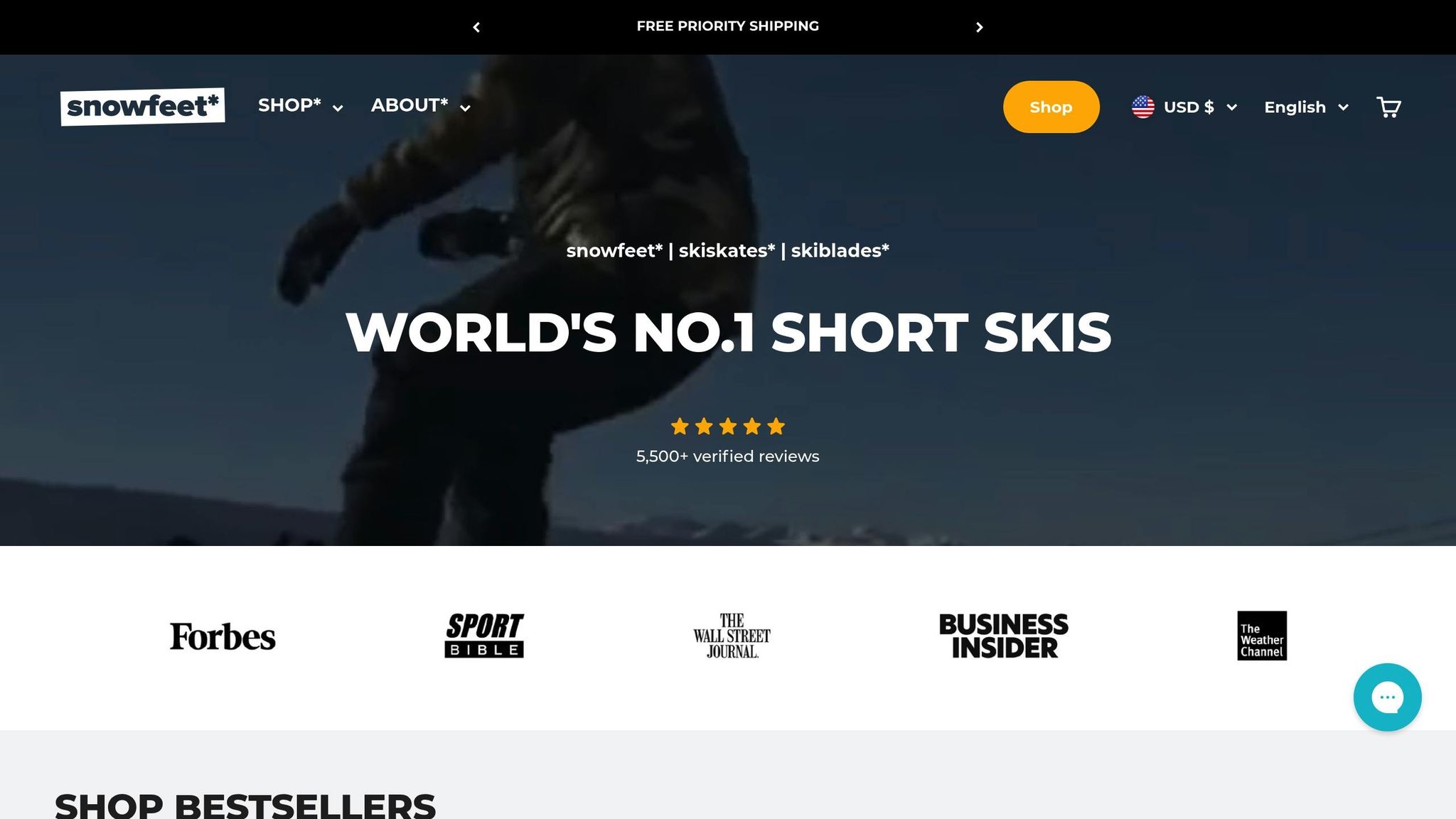
Si vous souhaitez éviter les tracas de l'ajustement des chaussures de ski, Snowfeet* pourrait être votre solution. Ces mini skis et Skiskates fonctionnent avec vos chaussures d'hiver ou de snowboard habituelles, donc pas besoin d'ajustements spécialisés. Pas de période de rodage, pas de points de pression - il suffit de les attacher et de profiter de la glisse. C'est une façon amusante et agile de découvrir le ski sans les maux de tête traditionnels liés à l'ajustement des chaussures.
"Si vous êtes un skieur intermédiaire, avancé ou expert avec un pied large, vous voudrez peut-être envisager des chaussures de ski de performance à volume élevé plutôt que des chaussures confort. Et comme toujours, il est important de se rappeler que les chaussures de ski sont très individuelles. Pour vous assurer d'obtenir la bonne chaussure de ski adaptée à votre style et niveau, travaillez avec un bootfitter." - Sam Tischendorf, bootfitter professionnel
Alors que les équipements traditionnels de marques comme Rossignol et Atomic nécessitent une précision dans la taille et l'ajustement, Snowfeet* offre une alternative simple qui vous permet de vous concentrer sur le plaisir plutôt que sur les réglages.
Qu'est-ce qui rend les chaussures de ski confortables et sans douleur
Pour avoir des chaussures de ski confortables toute la journée, trois éléments sont essentiels : le bon volume, le flex adapté et la personnalisation.
Volume de la chaussure et points de pression
Le volume de la chaussure fait référence à l'espace à l'intérieur de la coque, et il est souvent négligé lors du choix des chaussures de ski. Adapter le volume de la chaussure à la taille et à la forme de votre pied est la clé pour éviter l'inconfort.
- Les chaussures à faible volume sont conçues pour les pieds étroits. Elles offrent un ajustement serré qui améliore le contrôle. Si vous avez des pieds étroits mais choisissez une chaussure avec trop de volume, votre pied peut glisser, réduisant la performance et causant de l'inconfort.
- Les chaussures à volume moyen sont idéales pour la plupart des skieurs avec des pieds de largeur moyenne. Elles offrent un équilibre entre un maintien sûr et suffisamment d'espace pour le confort.
- Les chaussures à grand volume conviennent mieux aux personnes ayant des pieds larges ou des arches hautes. Forcer un pied large dans une chaussure à faible volume peut créer des points de pression douloureux et même couper la circulation, provoquant engourdissements ou picotements. Les zones sensibles courantes incluent les côtés des orteils, le dessus du pied (cou-de-pied) et autour du mollet où se trouve le collier de la chaussure.
Une bonne circulation sanguine est essentielle - non seulement pour le confort mais aussi pour garder vos pieds au chaud lors de longues journées de ski. Si vos chaussures sont trop serrées, vous le ressentirez.
Explication des indices de flex des chaussures
Les indices de flex mesurent la rigidité ou la souplesse d'une chaussure de ski, généralement de 60 (souple) à 140+ (très rigide). Ce chiffre influence à la fois le confort et la performance, mais voici la difficulté : les indices de flex ne sont pas uniformes entre les marques.
"Le choix du flex est crucial pour la performance que chaque chaussure offrira et est sélectionné en fonction du niveau du skieur, de la discipline et du poids." - Dr Ned Buckley, spécialiste podiatre et maître bootfitter
- Les chaussures à flex plus souple (60–90) sont plus tolérantes, ce qui les rend idéales pour les débutants. Elles sont plus faciles à enfiler et à retirer, mais ne transmettent pas l'énergie aux skis aussi efficacement.
- Les chaussures à flex plus rigide (120–140+) sont axées sur la précision et le contrôle. Elles sont parfaites pour les skieurs avancés qui ont besoin d'une réactivité maximale, mais elles sont moins indulgentes si vous êtes encore en phase d'apprentissage.
Voici un aperçu rapide de ce qui fonctionne selon les différents niveaux de compétence :
| Niveau de compétence | Flex femme | Flex homme | Idéal pour |
|---|---|---|---|
| Débutant/occasionnel | 60–90 | 70–90 | Confort, apprentissage et tolérance |
| Capacité régulière/bonne | 90–110 | 90–120 | Un mélange de confort et de contrôle |
| Expert/Performance | 110–120 | 120–130 | Précision et technique avancée |
| Compétitif | 130+ | 140+ | Réactivité maximale |
Il est important de noter que la température peut rendre les chaussures plus rigides par temps froid, et que différentes marques peuvent évaluer la flexibilité différemment. Par exemple, une chaussure de course avec une flex de 80 peut sembler aussi rigide qu'une chaussure de loisir notée à 100. Essayer les chaussures reste toujours la meilleure façon de trouver la bonne combinaison.
Une fois que vous avez trouvé la bonne flexibilité, des ajustements supplémentaires comme les chaussons personnalisés ou le thermoformage peuvent porter le confort à un niveau supérieur.
Chaussons personnalisés, semelles et thermoformage
Même avec le bon volume et la bonne flexibilité, un peu de personnalisation peut faire toute la différence.
- Les semelles personnalisées remplacent les semelles génériques fournies avec vos chaussures. Elles améliorent le soutien de la voûte plantaire, répartissent la pression de manière uniforme et aident à aligner correctement vos pieds. C'est une petite amélioration qui peut avoir un grand impact.
- Le thermoformage consiste à chauffer le chausson de la chaussure et à le modeler pour correspondre à votre pied. Ce processus réduit les points de pression et élimine les « points chauds ». De nombreuses chaussures de milieu et haut de gamme sont équipées de chaussons thermoformables, et le processus ne prend qu'environ 20 à 30 minutes dans un magasin de ski.
- Les chaussons personnalisés vont plus loin. Ils remplacent le chausson entier par un modèle conçu spécifiquement pour la forme de votre pied. Ils sont un choix populaire pour les skieurs sérieux ou toute personne ayant des pieds difficiles à chausser.
L'avantage Snowfeet
Les chaussures de ski traditionnelles de marques comme Rossignol, Atomic et Head nécessitent souvent un ajustement et une personnalisation approfondis pour être parfaites. Snowfeet* propose une option plus simple. Avec Snowfeet*, vous pouvez utiliser vos chaussures d'hiver ou de snowboard existantes - pas besoin d'ajustements spécialisés, de périodes de rodage ou de gérer des points de pression. Cela signifie plus de temps à profiter des pistes et moins de temps à s'occuper de votre équipement.
sbb-itb-17ade95
Choisir des chaussures pour short skis et Skiskates
Lorsqu'il s'agit d'associer des chaussures avec des short skis et des Skiskates, l'accent passe du simple confort à la recherche de la combinaison idéale pour la performance et la polyvalence. Les produits Snowfeet* sont conçus pour fonctionner avec une variété de chaussures, ce qui en fait une option flexible pour les sports d'hiver.
Compatibilité des chaussures avec les produits Snowfeet*
L'une des caractéristiques remarquables des produits Snowfeet* est leur compatibilité avec plusieurs types de chaussures. Que vous possédiez des chaussures d'hiver, des chaussures de snowboard ou des chaussures de ski, vous avez des options. Par exemple, des modèles comme les Snowfeet* Mini Ski Skates et le Snowfeet* Pro vous permettent de vous attacher avec des chaussures que vous avez déjà chez vous, éliminant le besoin de chaussures spécialisées. Si vous recherchez plus de confort pour la marche, les chaussures de snowboard sont un excellent choix.
Pour ceux qui utilisent des Skiskates ou des Skiblades, la polyvalence continue. Vous pouvez opter pour des fixations de snowboard si vous préférez une glisse plus détendue ou choisir des fixations de ski pour un contrôle plus précis. Cependant, il convient de noter que le modèle Skiblades 120 cm nécessite spécifiquement des chaussures de ski. Bien que cela puisse sembler restrictif, c'est toujours plus simple que les skis longs traditionnels, qui exigent une compatibilité précise entre la chaussure et la fixation.
Lors du choix des chaussures pour l'équipement Snowfeet*, recherchez un ajustement serré mais confortable. Un bon maintien de la cheville est essentiel, tout comme une semelle qui s'attache solidement aux fixations. Cette combinaison garantit que vous resterez à l'aise tout en gardant le contrôle sur les pistes.
Avantages des designs légers et portables
Les équipements de ski traditionnels peuvent sembler être un entraînement rien que pour les porter. Snowfeet* renverse la situation avec leur design léger et compact. Cela les rend faciles à emporter pour des randonnées, des sorties neige spontanées ou même des vacances. De plus, le poids réduit signifie moins de fatigue lorsque vous êtes en déplacement.
Parce que l'équipement est plus léger, votre choix de chaussures joue un rôle encore plus important dans votre expérience globale. Une chaussure bien ajustée aide à transférer vos mouvements plus efficacement aux skis, améliorant l'équilibre et la stabilité. C'est particulièrement utile pour les débutants qui apprennent encore. C'est ce qui fait ressortir Snowfeet* par rapport aux configurations traditionnelles.
Comparaison : Snowfeet* vs. Marques de skis traditionnelles
Voici un aperçu rapide de la façon dont Snowfeet* se compare aux marques de skis traditionnelles comme Rossignol, Atomic et Head :
| Caractéristique | Produits Snowfeet* | Marques de skis traditionnelles (par ex., Rossignol, Atomic, Head) |
|---|---|---|
| Compatibilité des chaussures | Fonctionne avec les chaussures que vous possédez déjà | Nécessite un ajustement spécialisé des chaussures |
| Confort | Flexible - choisissez vos chaussures préférées | Nécessite un ajustement précis et un temps de rodage |
| Portabilité | Léger et facile à transporter | Volumineux, nécessite souvent des barres de toit ou des sacs à skis |
| Polyvalence | Adapté à divers terrains | Limité aux pistes de ski et conditions spécifiques |
| Temps d'installation | Rapide - attachez et partez | Installation plus longue avec fixations et ajustements des chaussures |
| Coût | Pas besoin d'achats supplémentaires de chaussures | Investissement supplémentaire dans des chaussures spécialisées |
L'équipement de ski traditionnel vous lie souvent à un système spécifique, nécessitant des ajustements personnalisés des chaussures et des fixations spécialisées. Cela ajoute du temps et des coûts. Snowfeet*, en revanche, vous permet d'utiliser les chaussures que vous possédez déjà - vous faisant économiser de l'argent et réduisant le temps passé au magasin de ski.
La nature modulaire de Snowfeet* signifie aussi que vous pouvez ajuster votre équipement selon vos plans. Vous partez pour une randonnée en hors-piste ? Des bottes d'hiver robustes sont un choix solide. Vous prévoyez d'aller au snowpark ? Les bottes de snowboard offrent la flexibilité nécessaire pour les figures. Et si vous visez la précision sur les pistes damées, les chaussures de ski restent un excellent choix pour de nombreux modèles Snowfeet*.
Cette adaptabilité fait de Snowfeet* un excellent choix pour les voyageurs, les débutants et tous ceux qui cherchent une façon plus simple de profiter des sports d'hiver sans les tracas de l'équipement traditionnel. Alors que des marques comme Rossignol et Atomic excellent dans le ski haute performance, elles n'offrent pas le même niveau de commodité et de polyvalence que Snowfeet*.
Comment trouver l'ajustement parfait
Obtenir le bon ajustement de la chaussure de ski est une question de précision. Une chaussure bien ajustée signifie que vous skierez confortablement sans douleur persistante. Le bootfitter professionnel Sam Tischendorf le dit mieux :
"Cela doit ressembler à une poignée de main ferme, presque un peu étrange. La doublure de la chaussure doit envelopper tout votre pied et se sentir comme un gant bien ajusté."
Cette description capture parfaitement l'équilibre entre confort et soutien dont vous avez besoin pour de longues journées sur les pistes. Une fois que vous avez chaussé les bottes, testez-les avec les bonnes chaussettes de ski pour simuler leur ressenti réel en montagne.
Essayez les chaussures avec des chaussettes de ski appropriées
Utilisez toujours les chaussettes de ski que vous prévoyez de porter lors de l'essayage des chaussures. Pourquoi ? Parce que des chaussettes en coton ordinaires ou en laine épaisse peuvent complètement fausser l'ajustement. Les chaussettes de ski sont plus fines, conçues pour fonctionner avec la doublure de la chaussure pour un meilleur ajustement. Tester les chaussures avec elles vous assure de savoir exactement comment elles se sentiront en action.
Si vous avez tendance à alterner entre des chaussettes de ski légères et rembourrées selon la météo, essayez les chaussures avec les deux types. Cela vous aide à voir si des ajustements sont nécessaires selon le choix des chaussettes.
Faites attention à quelques points clés : vos orteils doivent avoir un peu de liberté de mouvement, mais il ne doit pas y avoir d'espace supplémentaire. Votre talon doit être bien calé dans la poche du talon avec un soulèvement minimal lorsque vous vous penchez en avant.
Testez les points de pression à l'intérieur
Ne vous contentez pas d'enfiler les chaussures et de dire que c'est bon - passez au moins 10 à 15 minutes à marcher avec. Ce temps supplémentaire permet à vos pieds de s'adapter aux chaussures, facilitant la détection des points de pression.
Pendant les tests, imitez autant que possible les mouvements du ski. Fléchissez les pieds, penchez-vous en avant et faites attention à toute zone serrée ou inconfortable. Si vous remarquez des points de pression, marquez-les avec de la craie ou un marqueur pour pouvoir les corriger plus tard.
Les chaussures doivent être sécurisées - pas lâches comme des chaussons - mais elles ne doivent pas non plus créer de points de pression. Il ne doit y avoir aucun mouvement au niveau du médio-pied ou de la cheville. Si votre talon se soulève facilement, les chaussures sont trop lâches et doivent être ajustées.
Une fois que vous avez identifié les zones problématiques, il est temps d'affiner l'ajustement avec les boucles.
Ajustez les boucles progressivement
Commencez par la boucle du cou-de-pied, cruciale pour verrouiller votre talon en place. Cette boucle fait le gros du travail, alors concentrez-vous sur un ajustement parfait avant de passer à la boucle supérieure pour sécuriser le bas de votre jambe.
"La partie la plus importante où vous devez sentir la sécurité est le cou-de-pied et autour des chevilles. C'est la partie de votre chaussure qui pilote votre ski. Vous devez être maintenu fermement vers l'arrière et vers le bas." – Patriot Footbeds
Les boucles inférieures concernent davantage la stabilité latérale, elles n'ont donc pas besoin d'être serrées à fond. Une bonne règle est de viser juste assez de tension pour pouvoir glisser un doigt en dessous. Un serrage excessif peut couper la circulation et provoquer des engourdissements - ce que vous ne voulez pas sur les pistes.
La plupart des chaussures modernes disposent de micro-réglages sur les boucles. Vous pouvez affiner l'ajustement en tournant la boucle dans le sens des aiguilles d'une montre pour serrer ou dans le sens inverse pour desserrer. Comme l'explique le bootfitter Steve Cohen :
"Une bonne chaussure ajustée doit épouser le pied et le bas de la jambe partout sans être trop serrée au point de faire mal."
Ne négligez pas la sangle de puissance en haut de la chaussure. Cette sangle maintient votre tibia en contact avec l'avant de la chaussure et aide à la flexion vers l'avant. Elle doit être serrée mais pas restrictive.
Quand il s'agit d'ajuster les chaussures de ski, de petits réglages peuvent faire une énorme différence. Comme le dit Matthias Schmid de McSporties :
"On dit qu'un millimètre, c'est un kilomètre dans le monde de l'ajustement des chaussures."
Prenez votre temps pour ajuster les boucles, ne vous précipitez pas. Une chaussure bien ajustée sera serrée au début et peut le rester pendant vos premiers jours sur les pistes. Cependant, elle ne doit jamais provoquer de douleur ni restreindre la circulation sanguine. La précision est essentielle, surtout si vous associez vos chaussures à l'équipement Snowfeet* pour diverses conditions.
Conclusion : Faire le bon choix
Trouver la bonne taille, s'assurer que votre équipement fonctionne bien ensemble et privilégier le confort sont les clés pour profiter à la fois du ski traditionnel et des configurations Snowfeet*. Les bonnes chaussures peuvent faire toute la différence sur les pistes.
Commencez par les bases : mesurez vos pieds avec précision, connaissez le volume de votre pied et choisissez un indice de flexibilité qui correspond à votre style de ski. Une bonne chaussure doit être ajustée - comme une poignée de main ferme - mais jamais douloureuse. Testez toujours les chaussures avec vos chaussettes de ski et ajustez les boucles pour un maintien sûr mais confortable. Cette attention aux détails pose les bases pour explorer une gamme d'options d'équipement.
L'équipement Snowfeet* offre une nouvelle approche des sports d'hiver. Contrairement aux marques traditionnelles comme Rossignol ou Atomic qui nécessitent des chaussures spécifiques pour les skis longs, Snowfeet* fonctionne avec vos chaussures d'hiver habituelles. Fabriqués en plastique léger et durable, ils sont compacts et faciles à transporter. Cela signifie que vous pouvez les emmener partout, des stations de ski bondées à la colline de votre quartier.
L'une des caractéristiques remarquables des mini skis Snowfeet* est leur polyvalence. Avec seulement 38 cm, ils sont plus courts que les Skiskates standards de 44 cm, vous offrant un meilleur contrôle et une maniabilité plus facile. Cela signifie aussi que vous n'êtes pas aussi limité dans le choix de vos chaussures que vous pourriez l'être avec des skis longs traditionnels. C'est un rappel que le confort doit toujours passer en premier quand vous vous préparez pour le plaisir hivernal.
Confort et performance ne doivent pas être un compromis. La technologie moderne des chaussures - comme les doublures personnalisées et les options de thermoformage - s'associe parfaitement avec l'équipement Snowfeet*, prouvant que les designs compacts peuvent toujours offrir de grandes sensations.
À mesure que le ski évolue, les skis plus courts comme Snowfeet* montrent que plus grand n'est pas toujours mieux. Leur design compact et portable apporte la même excitation que les équipements traditionnels, mais avec moins de tracas et plus de commodité.
Prenez le temps de tester votre équipement en profondeur et choisissez des chaussures qui correspondent à votre style de ski et à vos objectifs. Avec le bon équipement, chaque piste devient une aventure à conquérir.
FAQs
Quelle est la meilleure façon de choisir entre des chaussures de ski traditionnelles et les produits Snowfeet ?
Choisir entre des chaussures de ski traditionnelles et les produits Snowfeet dépend vraiment du type d'expérience de ski que vous recherchez. Snowfeet sont super légers, faciles à transporter et fonctionnent avec vos chaussures d'hiver habituelles. Ils sont idéaux pour les débutants, les skieurs occasionnels ou toute personne souhaitant une façon amusante et sans tracas de profiter des skis courts comme les skiblades ou les Skiskates. De plus, ils sont doux pour vos genoux et parfaits pour glisser sur des pistes damées ou des petites collines.
Les chaussures de ski traditionnelles, comme celles de Rossignol, Atomic ou Head, sont une autre histoire. Elles sont conçues pour les skieurs avancés et des terrains spécifiques. Elles offrent plus de soutien, de précision et de personnalisation, ce qui en fait le choix privilégié pour le ski haute performance ou compétitif. Donc, si vous cherchez la polyvalence et un moyen facile de commencer le ski, les produits Snowfeet sont un excellent choix. Mais si vous affrontez des pistes intenses ou un terrain technique, les chaussures de ski traditionnelles pourraient être une meilleure option.
Comment choisir la bonne flexion pour mes chaussures de ski ?
Choisir la bonne flexion pour vos chaussures de ski dépend de votre niveau, de votre style de ski et du terrain que vous préférez. Si vous êtes un skieur débutant ou intermédiaire, des chaussures à flexion plus souple (environ 60-90) sont votre meilleur choix. Elles sont plus confortables et indulgentes, ce qui facilite le contrôle de vos mouvements.
Pour les skieurs avancés ou experts, des chaussures plus rigides (100+) sont la meilleure option. Elles offrent une plus grande précision et un meilleur transfert de puissance, ce qui est crucial lorsque vous skiez de manière agressive ou que vous affrontez des pistes difficiles.
Si vous aimez les vitesses plus élevées ou les pentes plus raides, des chaussures plus rigides vous offriront la réactivité dont vous avez besoin. Mais si vous préférez glisser à un rythme détendu ou rester sur un terrain plus doux, des chaussures à flexion plus souple seront plus confortables et faciles à gérer.
Et voici un conseil : les produits Snowfeet*, comme les Skiblades et les Skiskates, fonctionnent incroyablement bien avec des chaussures ayant une flexion modérée. Cette combinaison offre juste le bon équilibre entre contrôle et confort, complétant parfaitement leur design compact et agile.
Les Snowfeet mini skis et Skiskates peuvent-ils égaler la performance des skis traditionnels pour les skieurs avancés ?
Snowfeet mini skis et Skiskates sont un excellent choix pour les skieurs qui aiment l'idée de combiner agilité, portabilité et pur plaisir sur les pistes. Ces merveilles compactes sont conçues pour des virages rapides et un contrôle sans effort, ce qui en fait un choix fantastique pour les débutants ou les skieurs occasionnels qui veulent une touche fraîche et ludique à leurs aventures enneigées. Mais si vous êtes un skieur expérimenté à la recherche de sensations fortes à grande vitesse ou affrontant de la poudreuse profonde, les skis traditionnels de marques comme Rossignol ou Atomic pourraient mieux vous convenir. Leur longueur plus importante et leur conception plus robuste sont mieux adaptées à ces exigences de performance.
Ce qui distingue Snowfeet, c'est leur design léger et compact qui les rend incroyablement faciles à transporter et à utiliser. Ils sont idéaux pour les courtes descentes, le carving ludique et pour essayer quelque chose de différent sur les pistes. Si votre objectif est de vous amuser et de garder les choses simples, plutôt que de rechercher la perfection technique, Snowfeet offre une toute nouvelle façon de profiter de la neige.
Articles de blog connexes
- Faut-il des chaussures spéciales pour les fixations de randonnée ? FAQ répondues
- Pourquoi mes chaussures de ski font-elles mal ? Causes courantes & solutions [2025]
- Chaussures de ski vs chaussures de snowboard vs chaussures d'hiver : différences clés, conseils d'ajustement & guide d'achat (2025)
- Quelles sont les options d'équipement de sports d'hiver les plus adaptées aux voyages pour 2025 ?







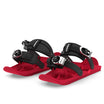
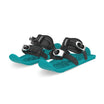












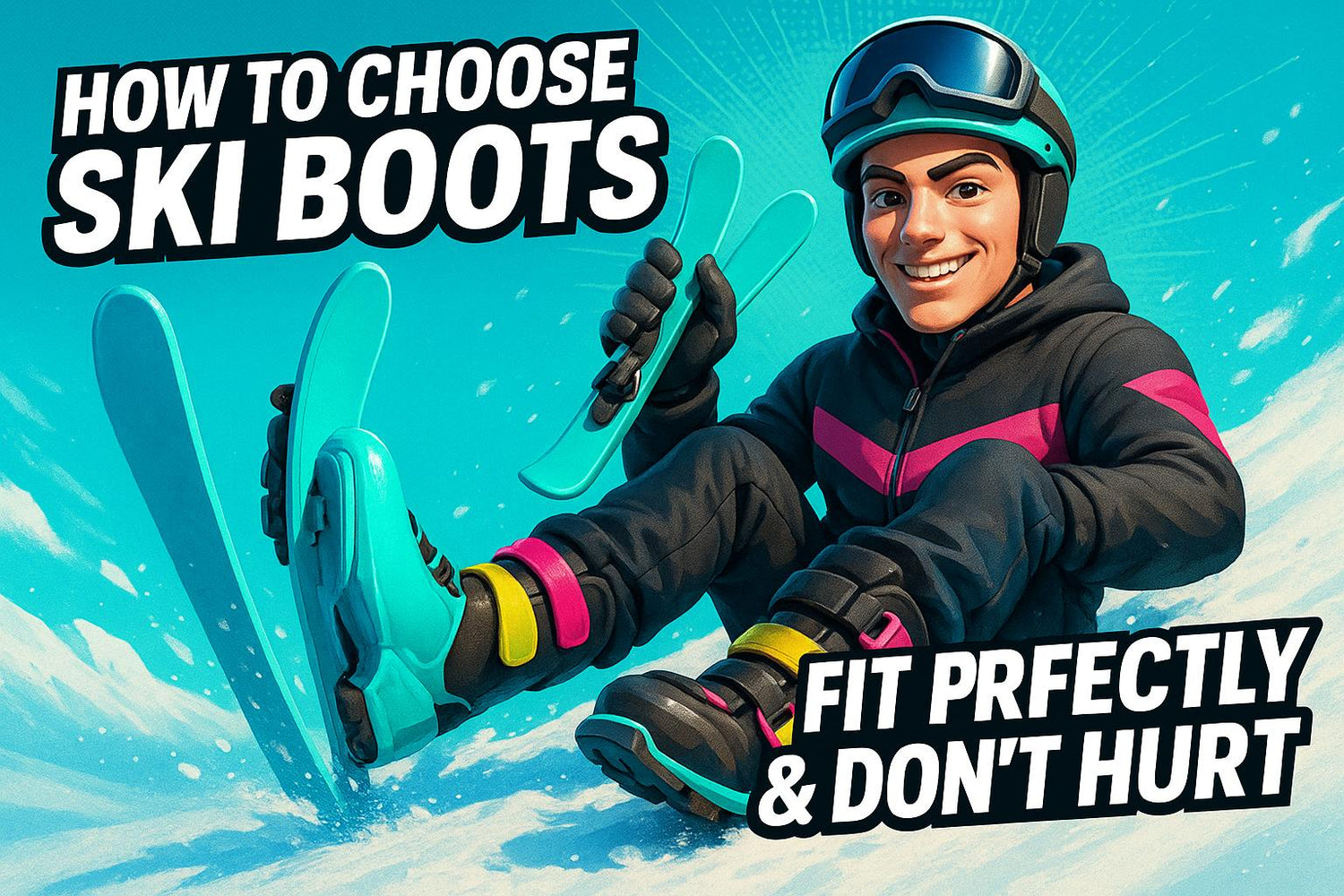
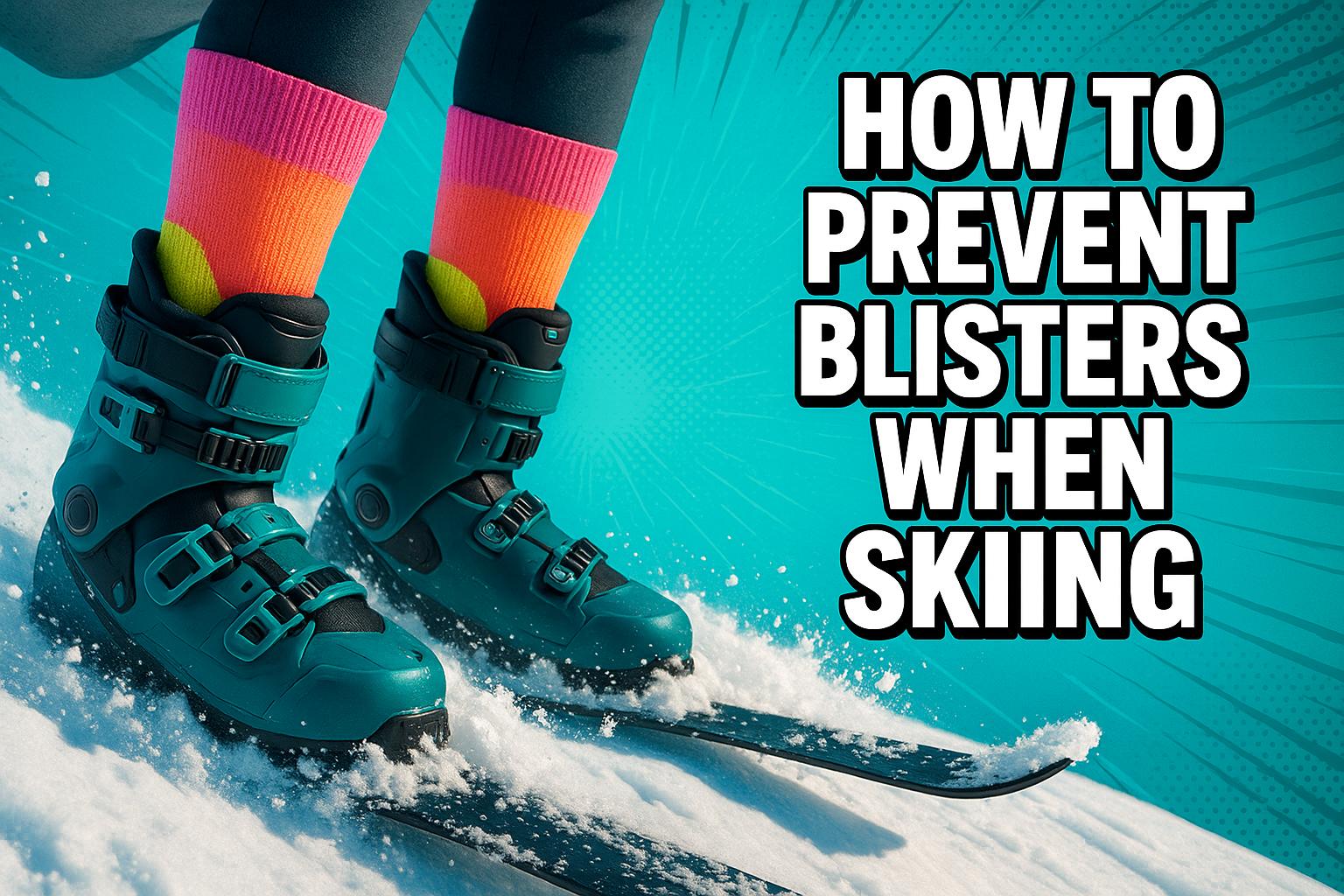
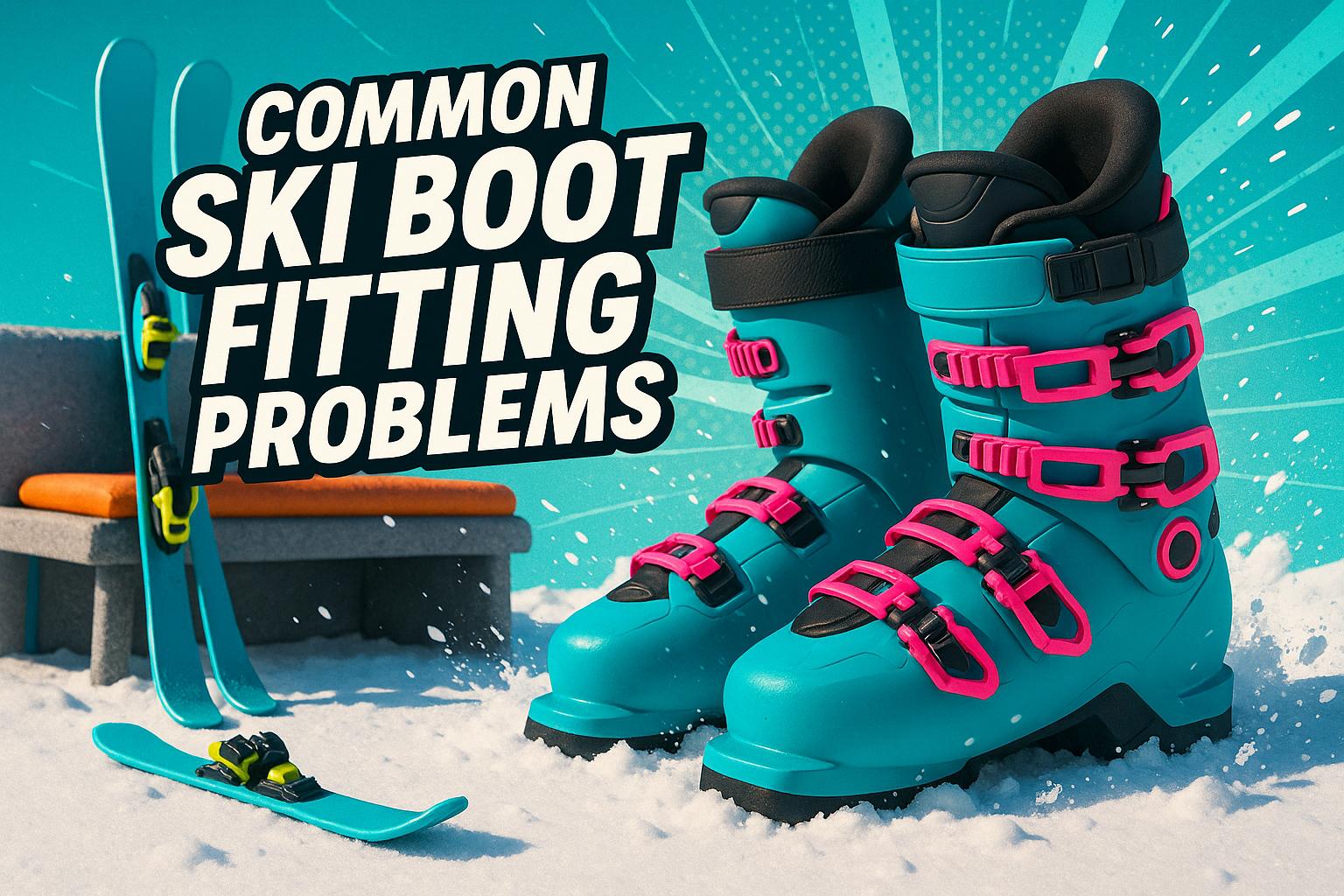




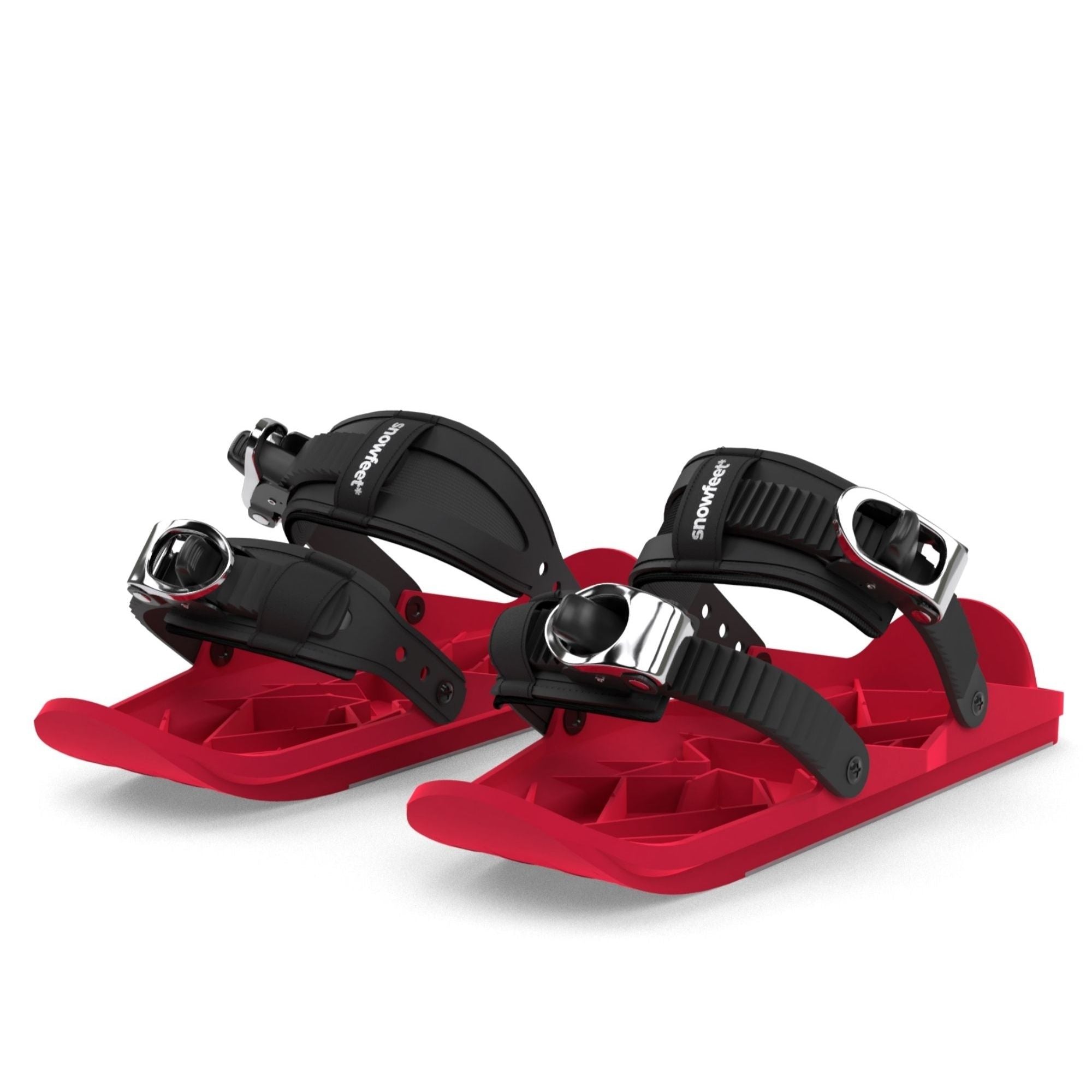
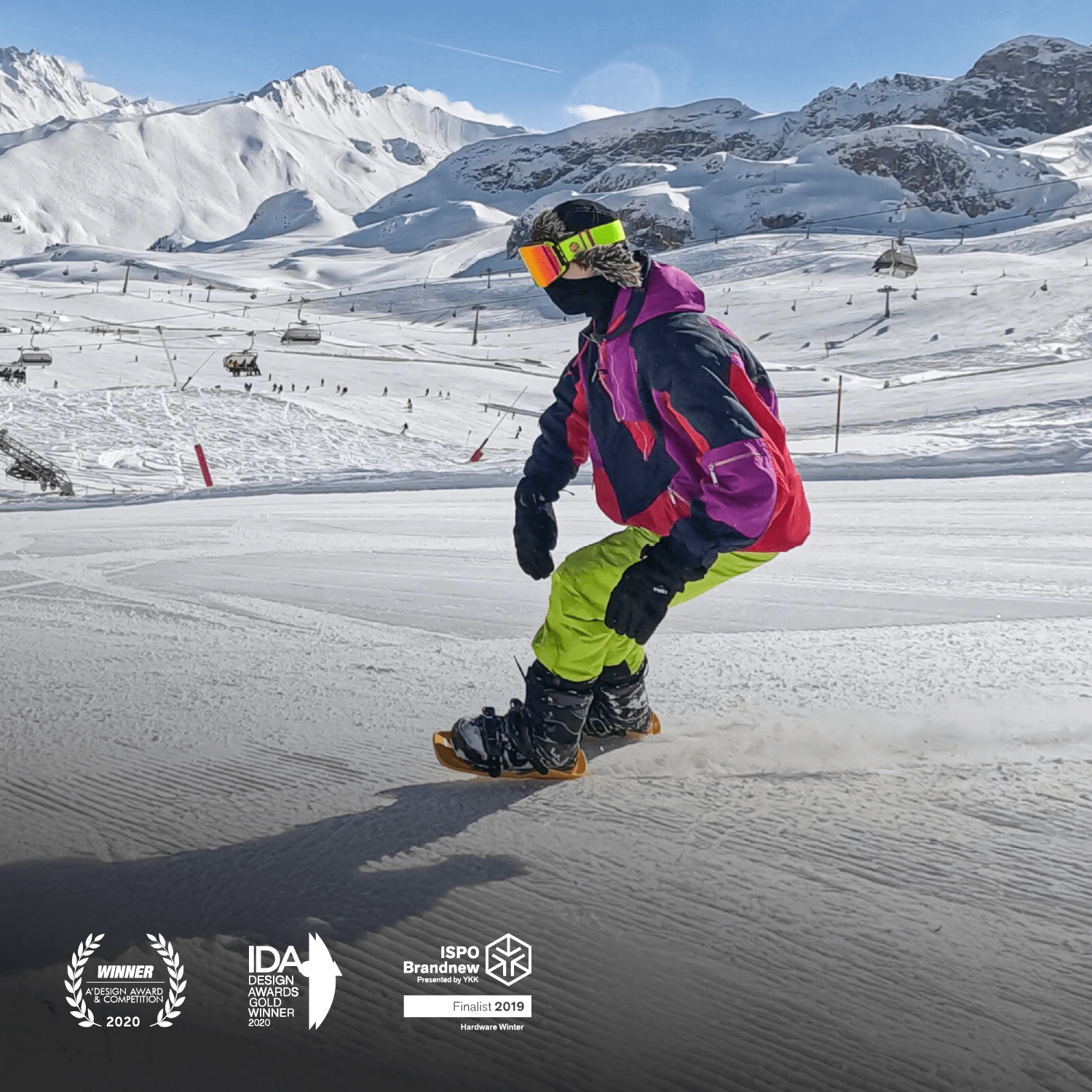




Laisser un commentaire
Ce site est protégé par hCaptcha, et la Politique de confidentialité et les Conditions de service de hCaptcha s’appliquent.